Above: Jason Gardner (center) is seen with his mother, La'Kysha Gardner (left) and brother, Amari. La'Kysha relays the news via Facebook Live that the alleged attacker's hearing was canceled a second time.
NEW HAVEN, Indiana — Jason Gardner first recounted the attack to police as he lay on a hospital bed shortly after midnight on June 6, 2017:
The 15-year-old was in the creek behind the Cedarwood Trails mobile home park in New Haven, Indiana, where he’d lived since February. He was walking across the mud, calling out his girlfriend’s name, when something hard hit the back of his head. He stumbled, and as he fell he turned and swung wildly, connecting with a cheek. But more blows rained down. Kicks struck his body as he curled up on the dirt. He couldn’t see their faces in the darkness. Only their voices were clear.
“Nigger!”
“You don’t belong here!”
“Go back to Africa where you came from!”
Jason wondered if he was about to die. He didn’t remember how it ended. At some point, Jason said, he thought he blacked out. Next thing he knew, the beating was over and his rescuers were kneeling over him.
Police cars rushed to the park. Their lights and sirens, along with the shrieks of Jason’s mother, drew neighbors outside. Soon, word of what had happened spread through the tight-knit community. Eventually a white teenager was charged with assault, and he now awaits trial in a case that has exposed the racism many locals have tried to ignore. Some in the community believe Jason’s family exaggerated the role race played in the events before and after the attack. Many prefer not to talk about the incident at all.

Because Indiana is among the five states without a hate crime law, local investigators didn’t have to determine whether the assault had been fueled by racism. The official record listed it merely as an act of battery, and an impressive streak lives on: According to law enforcement data, there has not been a single hate crime in the county since 2003.
During a year that has seen a surge in hate speech and violence across the country, including among children, the attack on the teenager and its aftermath reflect the lengths local officials and residents go to avoid confronting the inconvenient, complicated, emotionally charged issue of racism.
“People were just denying the family’s experience. They want to deny that there’s a racism problem.”
“People were just denying the family’s experience,” said Nicki Meier, an organizer with the Center for Nonviolence in Fort Wayne, which borders New Haven. “They want to deny that there’s a racism problem.”
To the Gardners, it was all too clear: A strain of terror that has coursed through the country’s history had suddenly entered their household. The people they turned to for protection — their police department, their community — wanted their silence. For drawing attention to this reality, they have faced a backlash that drove them out of their home and out of the city.
Three days before the Gardners were set to speak at an Oct. 21 rally in support of hate crime legislation, Jason’s mother received a Facebook message from an acquaintance who had heard from members of the suspect’s family:
“You might want to make sure you have a police presence on Saturday.”
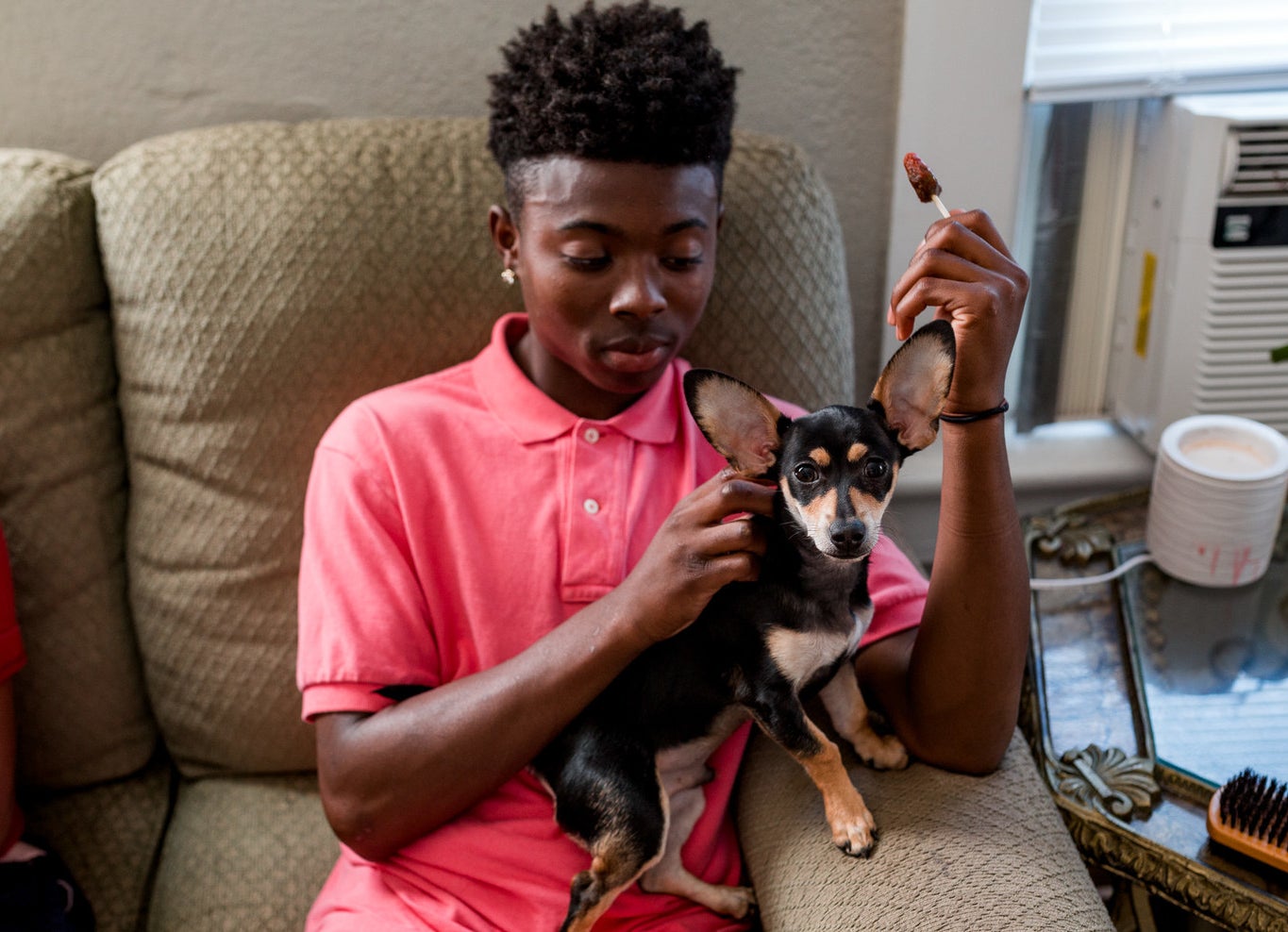
In August, after a white supremacist rally in Charlottesville, Virginia, turned violent and resulted in a woman’s death, state legislators in Indiana proposed a hate crime bill. Similar attempts have failed in recent years, as they have in Georgia, Arkansas, Wyoming, and South Carolina, which passed no law even in the wake of the Emanuel AME church massacre in 2015.
But even in states that have these laws, hate crime convictions are rare. When there is not a burning cross left on the lawn or a swastika scrawled on the garage, prosecutors usually run up against the challenge of parsing an assailant’s motivations. Many don’t want to risk an otherwise solid case by throwing in racial considerations.
Locals officials often turn to the Department of Justice to build a hate crime case. But, from 2010 to 2015, federal prosecutors pursued charges in just 13% of the alleged hate crimes they reviewed, according to a Syracuse University study. NAACP officials in Fort Wayne contacted the DOJ about the attack on Jason Gardner, but a DOJ spokesperson would not confirm to me whether or not they had opened an investigation into the case.
Hate crime charges are less about prison time than about recognizing the existence of bias-fueled violence.
Hate crime charges don’t often add significant time to a sentence. But these charges are less about prison time than about recognizing the existence of bias-fueled violence. The more hate crimes are missed, the more hidden the scope of hate in the US.
Though the Indiana State Police attempt to keep track of the number of hate crimes in the state, the lack of a hate crime law allows local agencies to ignore the issue. Just 19 of Indiana’s 535 police and sheriff’s departments reported a hate crime to state authorities in 2016. An Associated Press analysis found that, from 2009 to 2014, fewer than half of the state’s local agencies participated in the FBI’s annual effort to document hate crimes — the fourth lowest rate of any state. The New Haven Police Department is among those who have filed no hate crime reports in recent years.
Chief Henry McKinnon told me that in his 22 years on the force he could not recall a single instance of racist violence in the city before the attack in the creek. Most of the dozen or so white Cedarwood Trails residents I spoke to couldn’t remember any either.
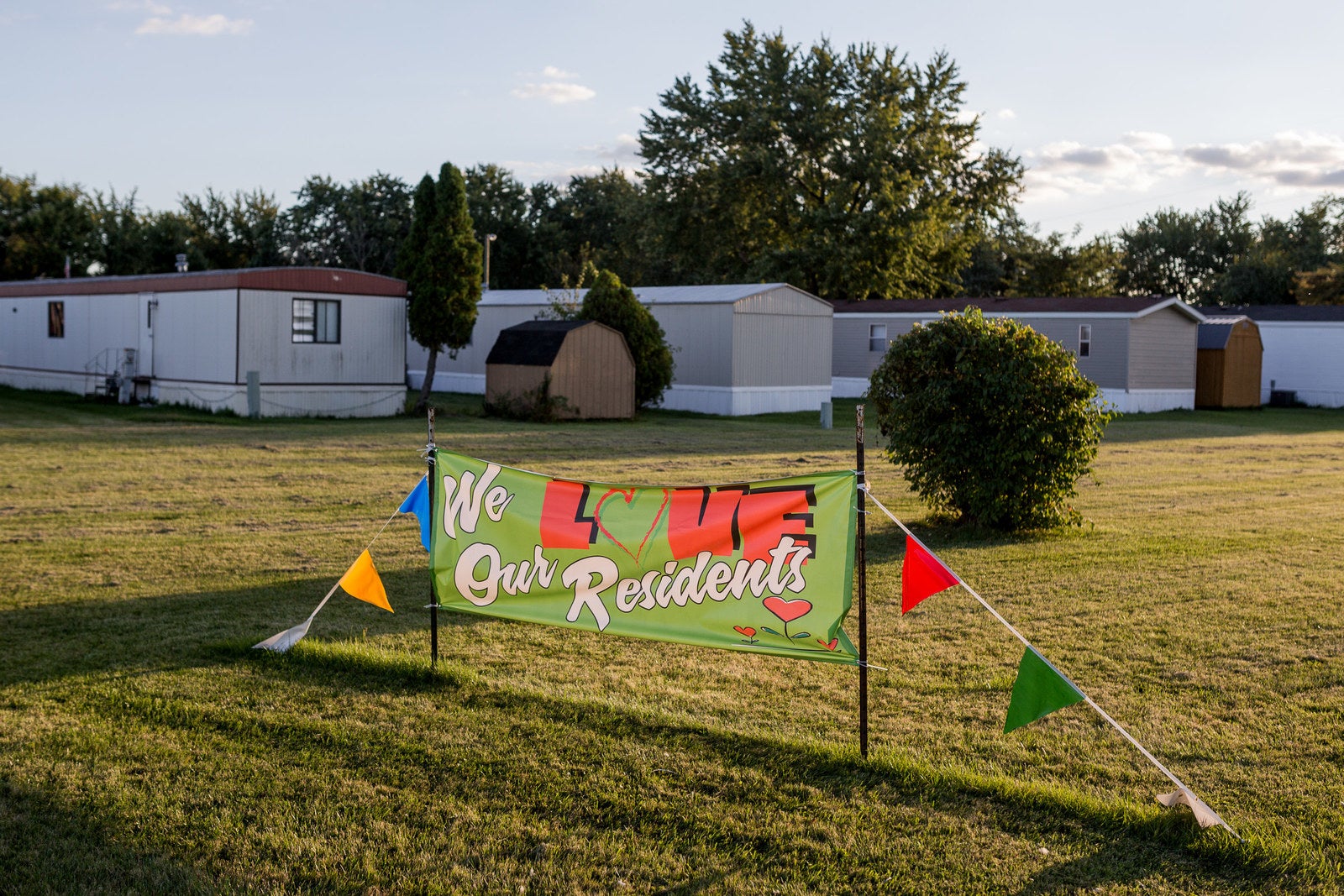
If longtime locals haven’t thought much about race, it might be because they’ve been accustomed to living almost exclusively among white people. Only in recent years has the population of black residents begun to grow in the city of around 15,000. From 2000 to 2010, the number of black people living in New Haven jumped from 95 to nearly 500, according to Census data — a pattern mirrored in scores of suburbs and small cities in the US. The town’s only public high school was 95% white as recently as 2003. Today, more than a quarter of its students are black.
The police department in New Haven is far less diverse: 19 of the 20 officers are white men; the sole woman, the first black member of the force, was hired in November 2016.
“I’ve never seen any officer enforce the law based on anybody’s sex, religion, culture, or color,” McKinnon said. “This incident aside, we've always had a positive relationship with all the members of our community.”
When I asked him in September if there’s anything he would change about how the Jason Gardner case played out, he replied, “As far as how we handled the investigation, I don’t see anything I would change. I’m proud of the guys and gals for the job they did.”
Yet before Jason had even reached the hospital on the night of the attack, the department had lost the family’s trust.
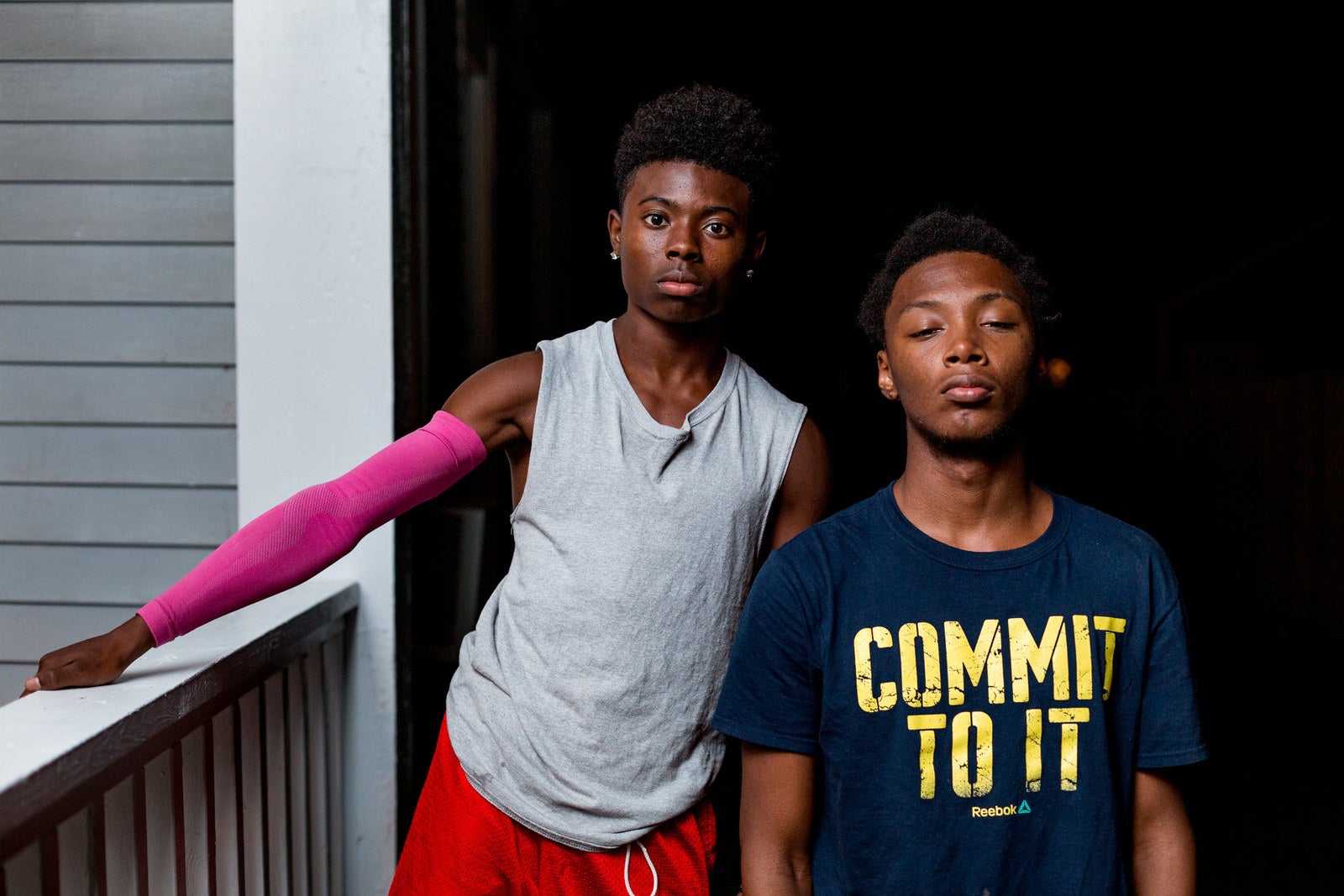
When the first responding officer, Landon Sell, arrived at the creek, he made a radio call announcing that he saw a “possible suspect” leaving the scene: a black man in orange shorts.
It was Jason’s 17-year-old brother, Amari, who was running home to alert the rest of their family about the attack. Chad Stahl, a neighbor, was with Amari. They were part of the small search party that had convened around 11 p.m., an hour after Jason was supposed to be back home for curfew. Two other neighbors in the group stayed in the creek with Jason, who they’d found lying on his back, unmoving, his shirt ripped. In the police report he wrote two hours later, Officer Sell said that when he got to Jason, he asked if he’d been attacked by a man fitting the possible suspect’s description and Jason answered affirmatively. Both Jason and one of the neighbors present told me the officer never asked that.
“The officer didn’t listen to me or Amari.”
When the second responding officer, Greg Anderson, saw Amari — a young black man in orange shorts — and Stahl running through the neighborhood, he ordered them to stop, then handcuffed Amari but not Stahl, who is white.
“I was trying to let the cops know that Jason was Amari’s brother,” Stahl said in a written statement for the court. “The officer didn’t listen to me or Amari.”
Anderson’s police report, which he wrote two hours later, didn’t mention that a second person was with the black suspect he’d detained. Chief McKinnon confirmed to me that a white companion had been present, but he defended Anderson’s omission: “He’s focusing on the suspect,” the chief said.
When Jason’s mother, La’Kysha, saw Amari inside a police car pulling up to the creek, she erupted in fury.
She got in Anderson’s face, shouting that he was racist, that he had detained an innocent black teenager yet not the white man with him, that his department had done nothing to protect her family and had instead treated them like criminals. Her neighbor Heather Roberts-Smith pulled La'Kysha away.
“I’m white,” she recalled saying to La'Kysha. “Let me talk to the police.”
Within minutes, Amari was freed. Paramedics pulled his younger brother up the embankment on a backboard, then loaded him into an ambulance. In the hospital, as Jason told his story to a detective and an officer from the New Haven Police Department, the right side of his face was swollen, scratches cut across his chest, and at least one large bruise had formed on his torso.
He told police that he discerned three voices during the attack but recognized only one: It was a teenager named Lee, he said.

Jason had moved into the trailer park just four months before the attack.
On the February morning when his mother, La'Kysha, and her wife, Isolina Ball, drove through the subdivision for the first time, La'Kysha observed that they might be the only black people in the neighborhood, a tree-lined pocket of 291 trailers sandwiched between the dusty lots of construction companies. When they stopped at the leasing office to sign the contract, they saw a Confederate flag hanging from a house down the street.
The Gardners had previously lived in Fort Wayne, in a mostly black neighborhood. They’d relocated a few miles away, to this mostly white agricultural town with cheaper housing, intending to save for future college tuition payments for Jason and Amari. The Gardners quickly made friends, all of them white. Handsome and soft-spoken, Jason was popular among the girls at the trailer park. He dated one neighborhood girl until he found out she was lying about her age — claiming she was 15 when she was really 12.
Jason broke up with her. The next day, according to Jason, the girl’s father, Cory, grabbed him and said his sons would beat him up for upsetting his daughter. Jason slipped away and told his family what happened, and soon a group of them went to Cory’s lot to confront him.
It was the start of a dispute that continues today, the first in a series of incidents that brought police to the trailer park and forced neighbors to take sides as allegations of racism tore apart a community that white locals had considered welcoming to all.
As the families argued, insults flew. The four Gardners who were present claim Cory called Jason a "nigger." Cory's family declined interview requests, but in response to a Facebook message conveying the allegations in this story, his wife, Jennifer, told me: “Cory does not want to talk about it. My family is not racist and I want people to stop bothering my family.”
Isolina said she punched Cory in the jaw.
Over the next few weeks, neighbors said, relatives and friends of Cory’s daughter walked up and down the Gardners’ street, carrying knives and staring at the trailer.
“It definitely, to me, seemed like a racist thing,” neighbor Heather Roberts-Smith said. “These kids were coming down here to taunt them, to intimidate them.”
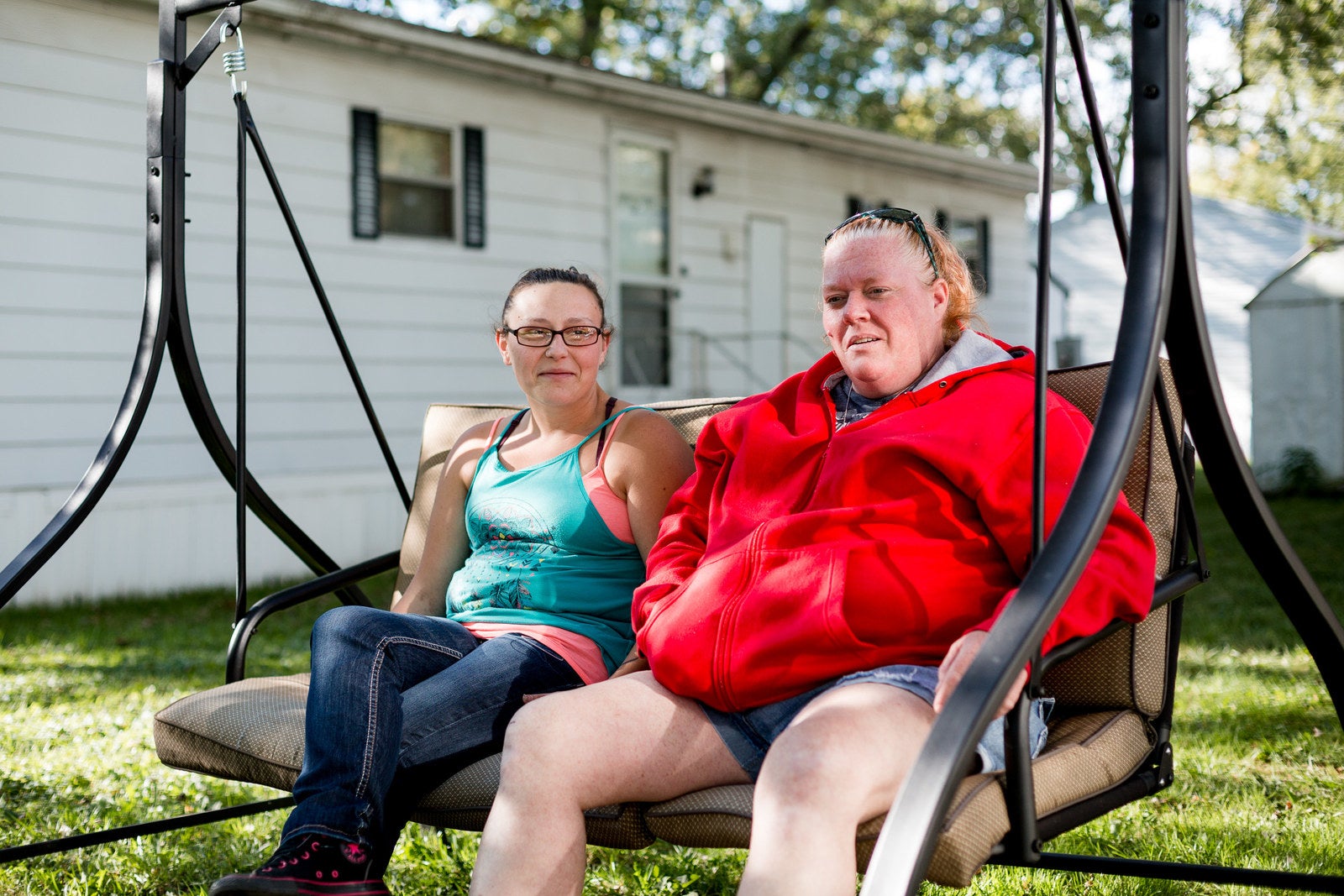
“Jason was talking to these white girls and they didn’t like that down there,” said Roberts-Smith’s daughter, Danielle Hoffman, gesturing toward the southern end of the trailer park where some of the rival boys lived.
One of those boys was Lee. According to one of his classmates, a 15-year-old girl who lived across the street from the Gardners, Lee considered Cory his “second family” and announced that he planned to punish Jason for the scuffle.
“Jason was talking to these white girls and they didn’t like that down there.”
The girl passed along the messages, including Snapchat screenshots, to Jason’s mother, who called police. The police chief said there wasn't anything he could do. In his experience, threats on the internet among teenagers were often empty, little more than a matter of kids being mean and dumb, and don’t constitute a crime.
“On a weekly basis we get reports of threats on social media,” Chief McKinnon said.
Officer Amber Woodson noted in a police report that, in the weeks before the attack, she went to the Gardner residence “a few times” in response to calls. Woodson and other officers told the families to stay away from each other and suggested filing restraining orders if the problems continued. They stuck to this process even after Lee sent a Snapchat message to a friend on May 24 stating, “I just wanna kill that little bastard jason gardener.”
On the evening of June 5, Jason went to a friend’s trailer to play basketball in the yard. On his bike ride home that night, Jason said, he happened to cross paths with Lee, who was with two friends Jason didn’t recognize. To Jason’s surprise, Lee was friendly and, in fact, had an urgent message: He’d heard that Jason’s current girlfriend was upset and had been seen walking toward the creek. Jason pedaled there as fast as he could.
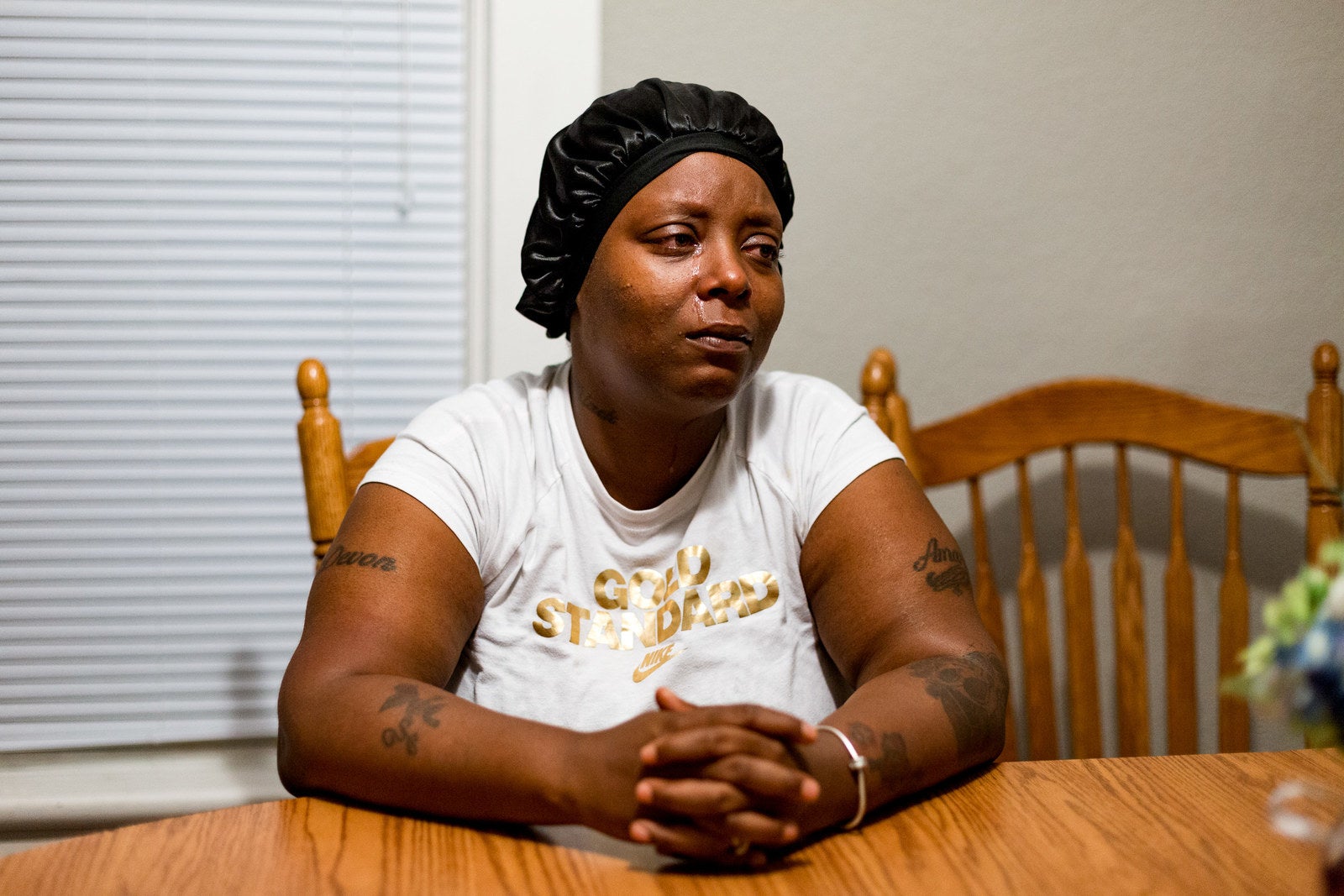
When Detective Jeff McCracken and Officer Woodson spoke with Lee a few hours after the attack, the boy told them that he’d played basketball until around 9:30 p.m., gone home for dinner, then went to Cory’s trailer to hang out with his teenage son. This account was different from what investigators heard from one of Lee’s friends, a teenage neighbor who said that Lee came over to her trailer around 9 p.m., left at some point, then returned sometime after 11 p.m. In his report, McCracken stated that he told Lee that “it seemed like he was not being completely honest.” Lee agreed to take a lie detector test at the police station two days later but didn’t show up. His parents didn’t return officers’ calls.
Despite all this, it took more than two months to bring charges against Lee. McKinnon defends that time lapse.
Growing impatient and skeptical of the department’s efforts, La'Kysha contacted the president of the local NAACP chapter.
“It’s not rocket science to put handcuffs on somebody and charge them with a crime, but if you do that without having all your T’s crossed and I’s dotted you’re doing a disservice to the victim,” he told me. “There was a lot of follow-up to be done.” He wouldn’t specify what additional evidence was needed at that point but said that prosecutors demanded more. (Allen County Prosecuting Attorney Karen Richards declined interview requests.)
Growing impatient and skeptical of the department’s efforts, La'Kysha contacted Larry Gist, the president of the NAACP chapter in Fort Wayne, and Clearwater McGee, a local activist. Gist brought the case to several local news outlets. Thirteen days after the attack, with still no arrests, McGee organized a rally at which McKinnon and Mayor Terry McDonald spoke outside city hall, assuring dozens of protesters that the investigation would bring justice.
McKinnon told me that his department completed its investigation and filed a request for arrest warrants to the prosecutor’s office by June 23, six weeks before charges would be filed and the defendant placed in custody. A spokesperson for the prosecutor's office disputed the chief's timeline but said she was "unable" to give specific dates. Such a delay is not unusual, the chief said, due to the attorneys’ heavy caseloads. But it means that for weeks, even though authorities had enough evidence to arrest him, the main suspect in a violent crime lived freely a few blocks from the victim.
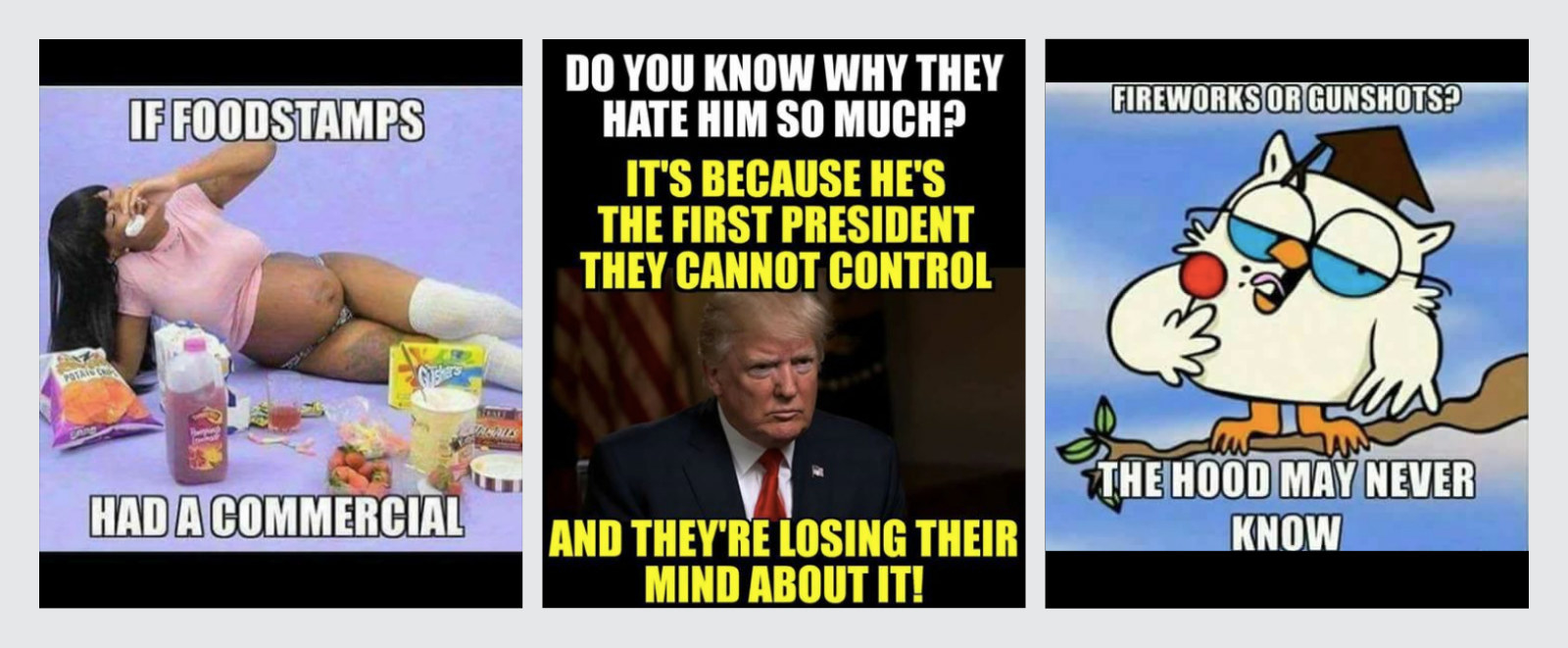
Lee’s parents declined interview requests for this story. I looked through his father’s Facebook page, on which Lee Sr. has posted dozens of racist and sexist memes. One, reposted from a page called “Take America Back” said: “Don’t scold me about my white privilege.” The text on another, above a photo of a black woman surrounded by bags of potato chips, a box of candy, and a tub of ice cream, read: “If food stamps had a commercial.” A third image stated: “Fireworks or gunshots? The hood may never know.”
Other posts promoted Lee Sr.’s apparent support for Donald Trump: “Do you know why they hate him so much?” read the text above a photo of Trump in a September post. “It’s because he’s the first president they cannot control.”

To the handful of black residents I spoke to, racism in the neighborhood mostly manifests as mean stares and cold interactions that leave them feeling unwelcome, a subtle tension that keeps them acutely attuned to their surroundings.
The gulf between those who do and don’t recognize this tension can start to form early. When a trio of kids paused their basketball game one afternoon to tell me what they remembered about the Gardner family, the two white boys, age 10 and 8, excitedly described the sights and sounds, the thrilling commotion, of the night of the attack; the 10-year-old black boy, after listening silently for a few minutes, interrupted to note that he now felt “scared” living in the trailer park because of what happened to the Gardners.
Isolina described being black in the neighborhood: “You feel like you’re safe as long as you stay in your lane.”
One resident told me about a white man who regularly walks by his trailer, eyeing him, never responding to his waves or morning greetings. One day, he saw the man spit on his car. A middle schooler told me that his parents had warned him to stay away from certain neighbors whom they believed might be racist. An older man who recently moved into the neighborhood recounted the time this summer he was standing in a parking lot two miles from the trailer park when teenagers in a passing car shouted out the open windows at him, “Nigger!”
“It’s been going on here,” La’Kysha says her friend Roberts-Smith recently told her, “but you’re the first to tell on them.”
Or as Isolina described being black in the neighborhood: “You feel like you’re safe as long as you stay in your lane.”
Twice in the month following the attack, Jason’s family spotted white men lurking on their property. On June 7, they chased off a white teenager peeking in the trailer window; a few weeks later, two white men traded words with Jason after he’d ordered them off the front lawn.
“Oh, dont worry ‘bout him. We’ll get someone to whoop him again,” Jason recalled one of them saying. The other moved toward Jason, one hand tucked into the waist of his pants, and threatened to shoot. The noise brought neighbors outside, and the men soon left.
In both instances, police were called, but no arrests were made. The cops said there was no evidence a crime had been committed.
“Seeing that hate on a daily basis, feeling fear on a daily basis, that became our normal.”
After the second incident, La'Kysha, worried that the threats were serious, called Larry Gist of the NAACP, who came over immediately, along with activist Clearwater McGee and a few friends. They stood watch outside the Gardner trailer late into the night. At around 2:30 a.m., they saw two white men approach the property before turning back upon seeing the group gathered in the yard. Again the police were called, but an officer didn’t arrive for nearly four hours — the police chief blamed a miscommunication among the dispatchers. During those hours of waiting, McGee’s frustration boiled over, his shouts carrying across the trailer park: Neighbors heard him declaring the whole community racist.
La'Kysha chronicled these incidents in Facebook posts, along with complaints about the police department. Soon she began receiving death threats and racist and homophobic messages, which she screenshot:
“You’re gonna die soon bitch … you should stay where you was at we don’t want you fuckin’ porch monkeys in our city … our commander in chief is the chief mother fuckers … we’re taking over … white lives matter niggers are just niggers...”
"The whole family is sick two moms all boys and no man someone needs to arrest them for being animals..."
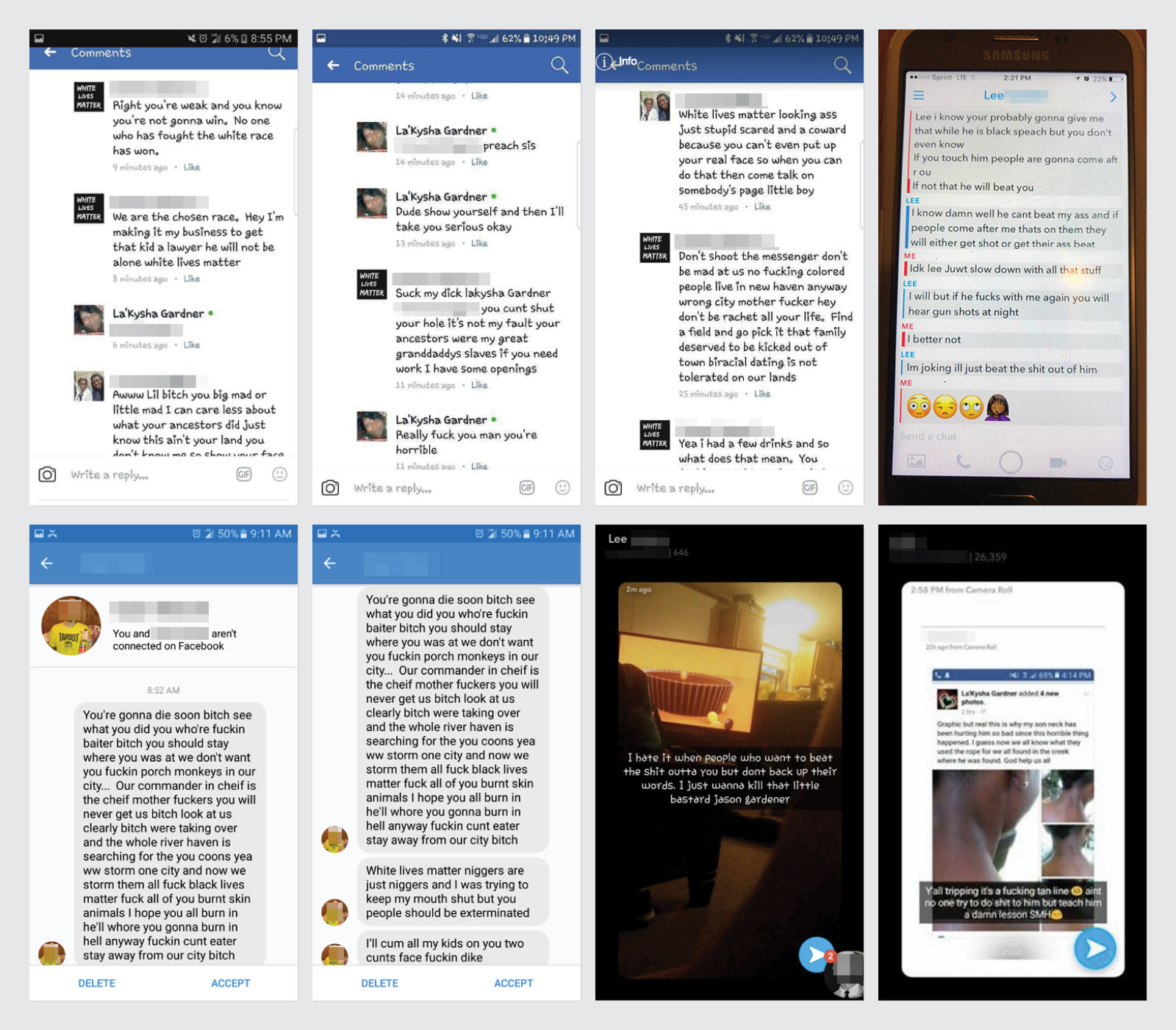
Random phone numbers sent vile text messages to Jason’s phone.
“Seeing that hate on a daily basis, feeling fear on a daily basis, that became our normal,” La'Kysha said.
One day this summer, La'Kysha said that she ran into two neighbors, both close with Lee, in a grocery store. “If he goes to jail,” one of them said, “there’s gonna be problems.”
A few days later, the Gardners woke up to find a dead groundhog on their porch.
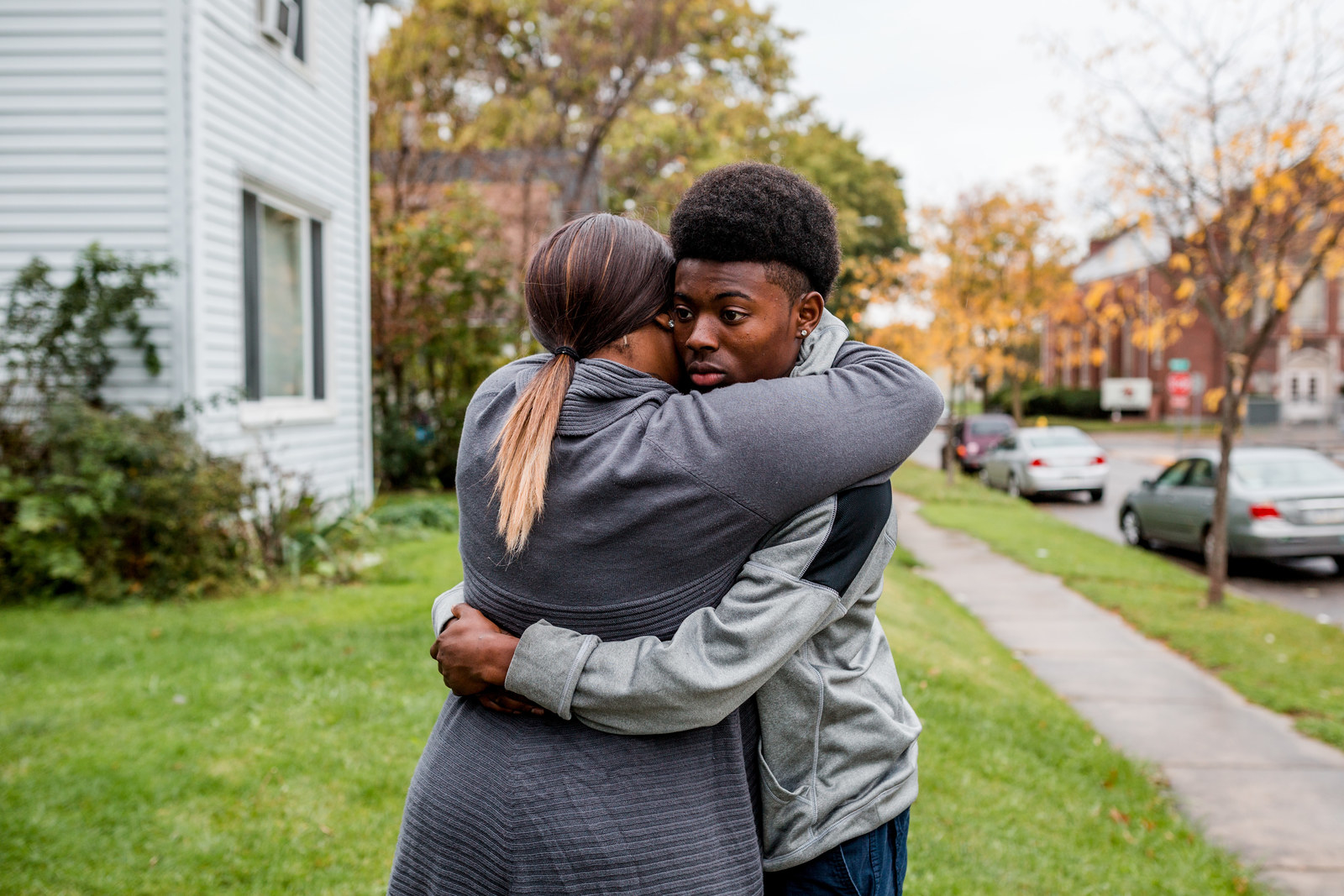
The Gardners no longer live in the trailer park. Local activists raised a few hundred dollars for moving expenses. A wealthy businessman loaned them $2,500 to cover the security deposit and a portion of the first year’s rent on a house in Fort Wayne. Lots of people reached out to La'Kysha to tell her that the racists terrorizing her family don’t represent the country. A wealthy retired woman offered to take Jason and his brother to a summer camp in Maryland to help get their minds off the stress.
“Now that you’re out of there, maybe you guys should tone it down,” La'Kysha remembers the woman saying.
La'Kysha heard that sentiment at least a few times — seemingly well-meaning people lightly suggesting that she was making too big a deal about the race stuff. This perspective extends to the police department.
“Do I think that was a sole motivating factor? No,” Chief McKinnon said. The way the chief sees it, the biggest impact race had in this case was in driving a wedge between police and residents both black and white, who began to distrust the department as the case dragged on. McKinnon doesn’t see the racism that black residents see; he said the “heightened emotions” surrounding the case, bolstered by La’Kysha’s Facebook posts, led people to imagine bias. Given the evidence available, it would’ve taken just as long to make an arrest if there’d been a white victim and a black suspect, he insists.
A few white neighbors told me they’re glad the Gardners are gone. They're relieved the drama is over.
This was a conflict at least partially sparked by juvenile machismo and the complicated romantic dynamics among teenagers, he and other white residents said. While they were quick to note that didn’t excuse the perpetrators, they left open the possibility that a boy of any color could have been a victim.
A few white neighbors told me they’re glad the Gardners are gone. Not because they doubt the merits of their complaints. Rather, the neighbors are relieved the drama is over.
I was most surprised to hear this from two neighbors who supported the Gardners throughout the ordeal. The Gardners considered the husband and wife among their closest friends in the neighborhood, and the families spent much time together. In interviews with police and in written statements, they backed up the Gardners’ accounts of threats and intimidation.
The couple and their daughter, a friend of Jason, met with me in late September and we sat on couches in their tidy living room. They were adamant in requesting that their names not appear in this story because they hope to avoid the sort of retaliation that drove the Gardners from the neighborhood.
Asked if the attack was racially motivated, the husband replied, “I’m sure that’s what it was ‘cause they kept calling him the n-word.”
But he and his wife then went on to blame the Gardners for keeping the dispute alive.
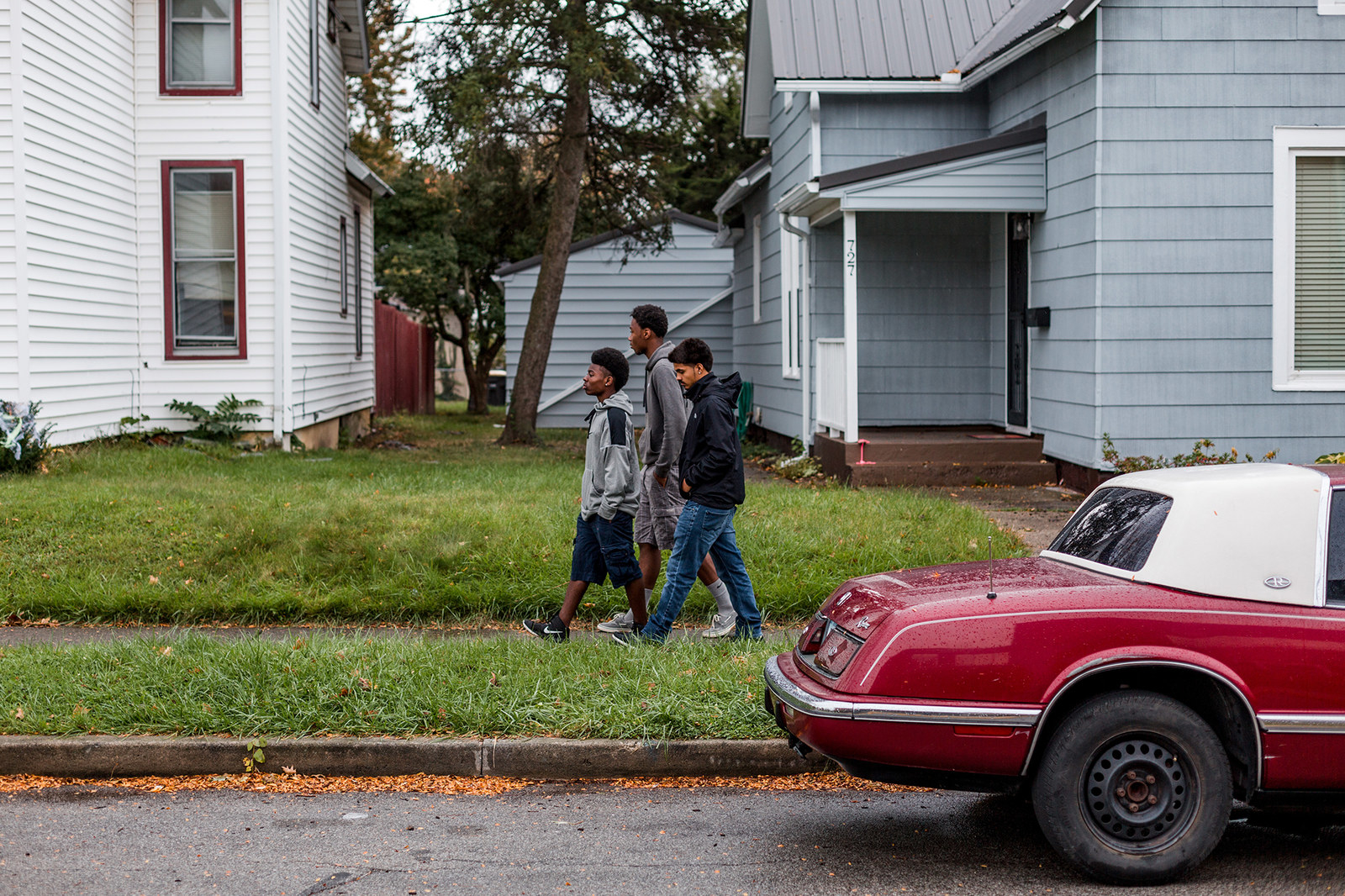
“Only thing that dragged it out,” the wife said, “was La'Kysha getting on video. ‘Everything happened because they’re a black family’ is what their excuse is.”
“We ain’t racist,” the husband quickly added, leaning forward in his seat. “We were very good friends with them.”
“But I’m fed up and I absolutely want nothing to do with it,” the wife said.
Activists would cause a scene outside the Gardners’ trailer after “every little thing,” the husband said.
A booming voice would “threaten everyone in the trailer park,” the wife said, referring to Clearwater McGee.
They had been pulled into the conflict, shunned by neighbors who sided with Lee, because of their friendly nature and the inconvenient fact that a black family had moved in nearby.
“The neighbors don’t hardly talk to us no more,” the husband said.
“I used to be friends with everyone here,” their daughter said.

Assault charges were finally filed against Lee on Aug. 9. He was hooked up to an ankle monitor and placed under home detention as he awaited trial. Chief McKinnon said that his department had requested arrest warrants for Lee and two other teenagers. But prosecutors told McKinnon that they had only enough evidence to pursue a case against Lee.
The Gardners have little faith that the court process will bring them peace. La’Kysha expects that Lee won’t serve a sentence harsher than a few years’ probation if found guilty of the crime that continues to haunt her family. Jason said he still looks over his shoulder, fearful of another attack. The events of recent months have left the family scarred, distrustful, and paranoid. One night when I sat with them in their dining room, a knock at the door startled and silenced the household before everyone realized it was only Jason’s friend inquiring if he wanted to play basketball.
“I feel like I failed my kids,” La’Kysha said that night. “To be the mother who moved them there…” Her voice trailed off. “But what else can I do about the situation but talk? And hope that people listen.”
On Sept. 28, the day before a scheduled hearing, the prosecutor called La'Kysha to inform her that it had been postponed. The next day, the judge met with prosecutors and defense attorneys to set a new court date. (It would again be postponed for later this year.) Nobody called to inform the Gardners, who only found out several days later when they received a revised subpoena in the mail. Also, nobody told them that the judge had taken Lee off home detention, removing his ankle bracelet for good behavior. ●
Have you been the victim of a hate crime? Tell us about it.

